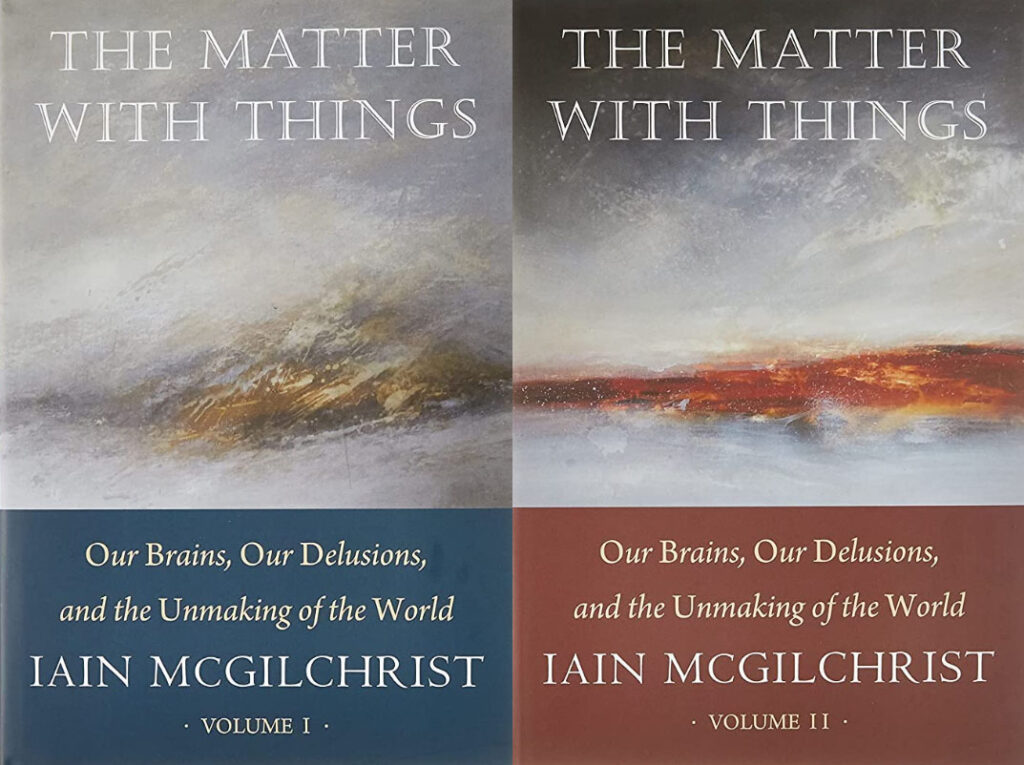
Escaping the Either/Or Thinking Trap
John Zada | February 14, 2023
A 2016 article in Outside magazine entitled “Everything You Know About Surviving Rip Currents Is Wrong” looked at research that challenged longstanding wisdom about what to do if you find yourself caught in a deadly current while swimming at the beach.
The traditional advice has long been that if you find yourself being pulled out to sea, you should not swim head-on against the current back towards shore. To do so, we are told, is largely futile because the rip is often too powerful. Battling it will increase the risk of fatigue and drowning. Instead, swimmers are advised to move parallel with the beach until they escape the narrow band of current coming off the shore. From there you can more easily return to land.
The Outside article brought attention to newer research by Jamie MacMahan, who, at the time, was a rip current expert at the Naval Postgraduate School in Monterey, California. His data, as well as countless hours he spent as a test dummy in the ocean, showed that rip current dynamics were far more complex than previously understood.
MacMahan claimed that swimming parallel to the shore to escape rips only worked sometimes. By swimming sideways, he said, you might just as often find yourself going inadvertently against the rip. Your chances of escape using that method, he estimated, were somewhere in the range of 50/50. Not exactly fool proof.
He argued that a more successful strategy to employ in a rip current situation was, actually, to do nothing. Your best odds, he alleged, lie in giving yourself up to the current.
MacMahan asserted that because 80% to 90% of rips he studied flowed in huge circles, by floating, a caught swimmer will usually find themselves back in the shallows in just a short time.
Given that rips account for many dozens of drownings, as well as thousands of beach rescues, each year in the United States, it was an important new discovery.
Yet, what fascinated me—just as much as this discovery—was the odd response to MacMahan’s findings, discussed in the Outside article.
Though his claims were supported by strong research and data, MacMahan met with rancorous and irrational resistance among his American colleagues and from beach safety officials. Many insisted he was flat-out wrong and a fierce polarizing debate arose in rip current circles about which survival technique—the old or the new—was the ‘correct’ one. This was especially odd given MacMahan wasn’t necessarily trying to overturn the previous advice to beachgoers (unlike what the Outside story’s misleading title suggested). He admitted swimming sideways sometimes worked.
As I read the piece, I wondered why both survival approaches couldn’t be accepted together as part of a toolkit for how to respond in such circumstances. Instead, they were regarded as at odds and irreconcilable.
Part of the issue is that MacMahon’s advice runs counterintuitive to our primitive evolutionary survival instincts. But this episode, I think, also illustrates, if on a smaller scale, a deeper cultural problem that is worsening by day: our growing penchant for simplistic, dualistic thinking that is black or white, right or wrong, and either/or.
Humans are not especially adept at responding to situations flexibly and on a case-by-case basis. We seek simplistic templates, formulas and solutions that we can automatically repeat. Yet, there are far fewer one-size-fits-all approaches than we like to imagine.
“Circumstances alter cases,” the writer Idries Shah once wrote.
The great English mathematician, Alfred North Whitehead, mirrored this when he wrote that it’s not so much a question of whether something is ‘true’ or ‘false’, but rather, “In what circumstances is this formula true, and in what circumstances is it false?”
Our natural inability to think more often along these lines, a kind of handicap, is amplified now by the fact that we’re caught in a deeply combative and polarized moment in our history, where disparate ideas, varying perspectives on any given subject or issue, are unable to be synthesized or even considered together. It’s as if we’ve suddenly lost an ability to see subtle shades and larger wholes. We can only recognize the parts, and we cling to them for dear life.
We see this in many polarized issues. Immigration, a deeply divisive issue in many countries, for instance, is sometimes considered either simply just ‘good’ or ‘bad’—something to be stopped outright, or to continue with few, or no, limits ad infinitum. The question around mask efficacy during Covid-19, rather than being, ‘Do masks work, or not?’ might have been more usefully framed as: ‘Which masks are more or less effective and under what circumstances—if at all?’ And the oft-cited conflict between science and religion, as clichéd a duality as there ever was, may constitute one of the deepest either/or traps of our modern times, when in fact, both fields might be better seen as complimentary wellheads of literal and metaphorical truth. The two can operate in tandem towards the common goal of helping us understanding the world better.
To be sure, black-and-white thinking has its place and function, if only because once in a while things are more cut-and-dry. Dualistic thinking is a product of the left-brain: the hemisphere that, among other things, is charged with seeing the world explicitly, via categories, and in parts, so it can better manipulate it (whereas the right hemisphere sees the world holistically and in-context).
At another level, ‘either/or’ evolved as a survival mechanism. When finding ourselves feeling threatened it allows us to ignore any ambiguity that could confound our survival decisions. We save precious moments otherwise spent in calculation by shortcutting straight to an assumption of threat. That might have sometimes saved us being eaten by a tiger hidden in the trees. This sort of ‘fast’ thinking, as author Daniel Kahneman writes, is one of the main systems of human mentation.
Similarly, this dualistic thinking is also appealing because it provides easy and simple answers and explanations that give us that cozy feeling of certainty—another preoccupation of the left brain.
But it can also backfire, as we see frequently now in our polarized politics.
Human survival, writ large, I think, requires retreat from these black-and-white postures. That means being better at seeing the forest from the trees. It also means being more receptive to the many sides of an issue, since, as author Iain McGilchrist says in The Matter with Things, those truths “may be truths on different levels, truths of different kinds, or, since all truths can be partial only, may both be needed to see a fuller picture.”
Returning to the rip currents debate mentioned earlier: since the Outside piece appeared in 2016, MacMahan’s research has been widely accepted in the United States—due likely, in part, to the growing publicity around his work. The advice now to swimmers in most places is to be ready to apply either, or both, survival strategies in a rip current situation (because each rip is different, neither approach alone is entirely fool proof).
I’ve cited this example also because it is illustrative of our ability to overcome this kind of primitive either/or thinking mechanism, given time. In this specific case it took over a decade for MacMahon’s findings to be accepted and synthesized into the whole. Some lives were likely lost in the interim until that new knowledge was assimilated. Given the scope of our black-and-white thinking habits at a societal, macro, level, change at scale will take even longer. Do we have that kind of time, given the types and multiplicity of problems that are bearing down upon us?
It is for this reason that thinkers such as Robert Ornstein with his idea of “conscious evolution,” and Idries Shah by way of traditional Teaching Stories he introduced to the West, both tried to introduce faster-track processes to achieve the sort of mental nimbleness needed to be as fixation-free as possible. The flexibility of mind they espoused, and the ability to synthesize differing viewpoints, may be the key to escaping not just rip currents, but the many larger ‘either/or’ traps that endanger our societies.
John Zada is a writer and journalist based in Toronto, Canada. He is the author of the books, In the Valleys of the Noble Beyond and Veils of Distortion.
Recent Blogs
- Our Subpersonalities and Many-Sided Selves
- An Old Story About Metaphysics
- The Conditioning Machines in Our Back Pockets
- Out on a Limb: The Danger of our Innate Shortsightedness
- Edward T. Hall: Culture Below the Radar
- The Half Brain Method
- 'He Who Tastes Knows': Contemporary Sufi Studies and the work of Idries Shah
- "They Saw a Game"
- A Funny Thing Happened on the Way to Enlightenment
- Finding the Right Way Home
- Time and Self
- Escaping the Either/Or Thinking Trap
- Looking Up, Looking Out
- Conditioning and the Gendered Brain
- New World, Same Mind?
- One Small Word
- Meaning: The Enduring Gift to Spirit
- Beyond East and West: Human Nature and World Politics
- Forest Smarts: A Part of or Apart From?
- How to Improve Group Decision-Making
- We Know More Than We Think We Do
- How Deep Can a Story Go?
- Lost and Found: An Encounter with the Intuitive Mind
- The Devil’s Tuning Fork
- Welcome to The Human Journey Blog

